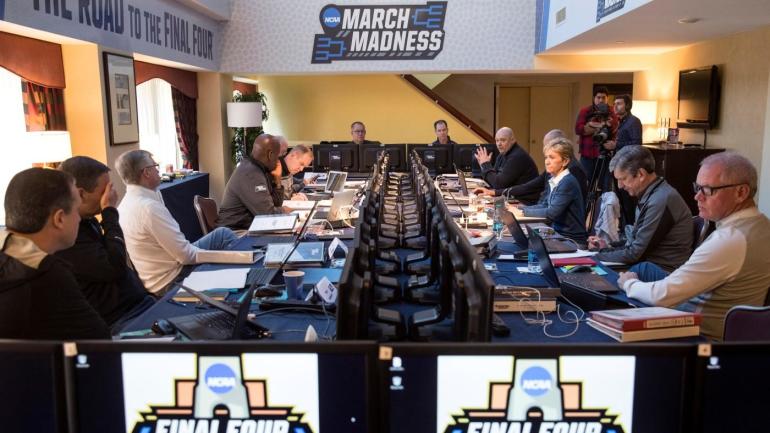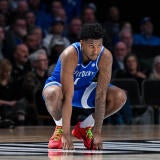
With the entire 2021 NCAA Tournament set to be held in Indiana, the Division I Men's Basketball Committee is "adopting new bracketing principles" that eliminate geographic proximity from the equation, according to a Friday announcement. Instead, seeding for this year's tournament will primarily be determined by the overall seed list and follow the "S-curve" method.
For example, the No. 1 overall seed in this year's NCAA Tournament will be placed in the same "region" as the overall No. 8 seed (otherwise known as the last team on the No. 2 seed line). From there, the first team on the No. 3 seed line (or the No. 9 overall seed) will join the No. 1 overall seed and No. 8 overall seed. In a normal year, a school's geographic proximity to the site of preliminary games would likely play a larger role than its overall seed in the decision on its bracket placement.
"As the committee discussed this topic, it became clear that the S-curve bracketing option makes the most sense, given the unique circumstances with which this tournament will be played," NCAA senior vice president of basketball Dan Gavitt said. "In a normal year, bracketing is done with consideration given to keeping as many teams as close to their campus as possible, reducing team travel and providing as many fans as possible an opportunity to watch their favorite teams participate in The Big Dance. But this year only, with the entire tournament being played in Indiana, the committee believes this different approach is optimal."
The NCAA's plan for now is to hold a 68-team tournament, like normal, starting with Selection Sunday on March 14 and culminating with the national title game on April 5, as was the plan all along. The games will be played at several venues, mostly in the Indianapolis area, or on college campuses within a relatively short drive of the city.
Though the S-curve seeding method will be followed, some exceptions will apply based on the following longstanding principles:
- Each of the top four teams selected from a conference shall be placed in different regions if they are seeded on the first four lines.
- Teams from the same conference shall not meet before the regional final if they played each other three or more times during the regular season, to include the conference tournament.
- Teams from the same conference shall not meet before the regional semifinals if they played each other twice during the regular season, to include the conference tournament.
- Teams from the same conference may play each other as early as the second round if they played no more than once during the regular season, to include the conference tournament.
- If possible, rematches of nonconference regular-season games should be avoided in the First Four and first round.

















